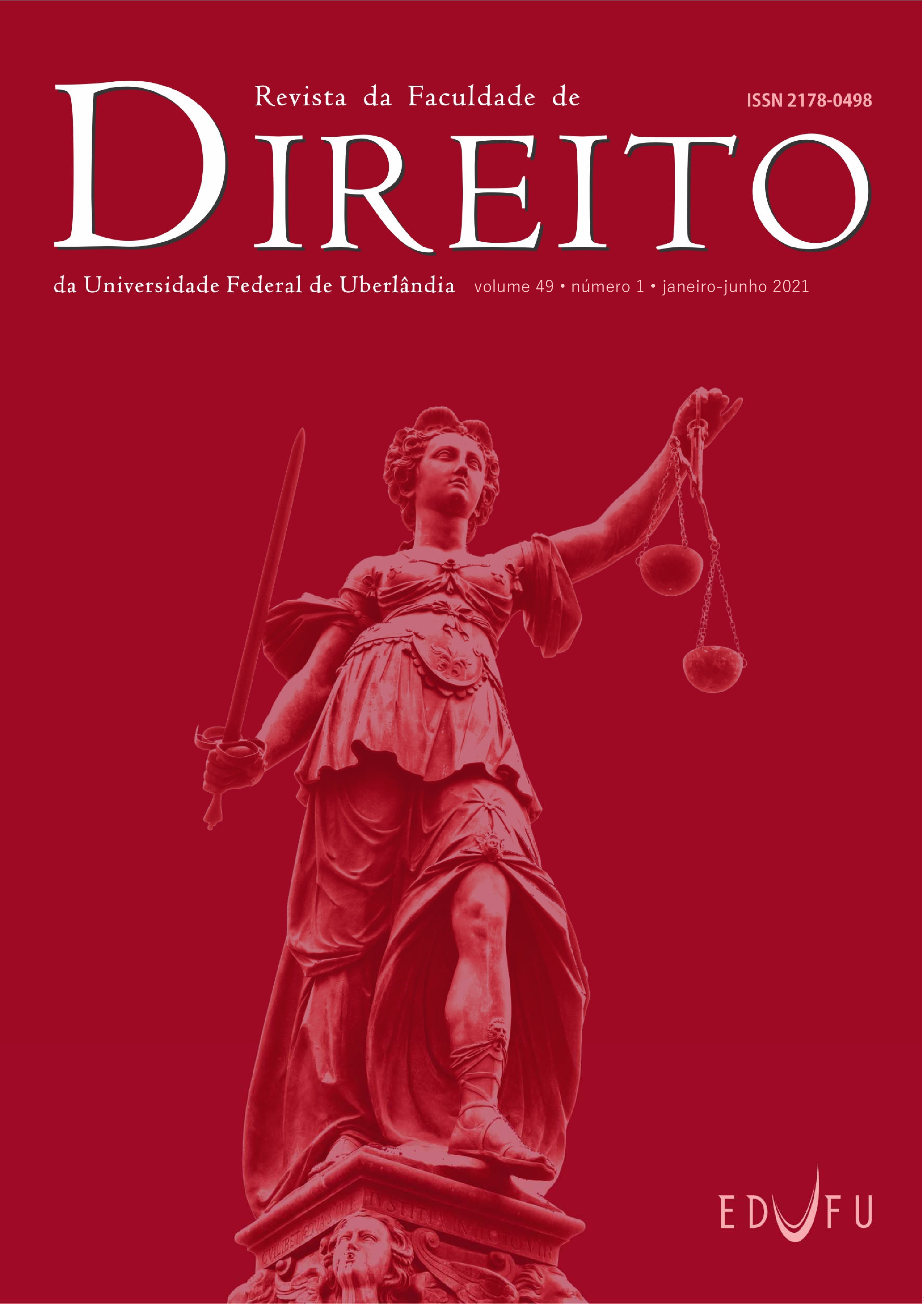Biodireito e Solidarismo
Base Jurídica para Inclusão Digital das Pessoas com Deficiência Visual na Sociedade da Informação
DOI:
https://doi.org/10.14393/RFADIR-v49n1a2021-59751Palavras-chave:
sociedade da informação, Deficiente visual, Inclusão Digital, Políticas Públicas, SolidarismoResumo
O presente artigo visa analisar a situação das pessoas com deficiência visual no atual panorama da sociedade da informação, assim como a necessidade e importância de se garantir a inclusão digital e
consequente inclusão social de tal grupo de pessoas consideradas vulneráveis. A abordagem oferecida parte do estudo do solidarismo e do biodireito, em especial, no princípio da Justiça, propondo a adoção e implementação políticas públicas para a efetivação do fundamento constitucional da dignidade da pessoa humana previsto na Carta Magna Brasileira e, consequentemente ao direito à inclusão digital como mecanismo de assegurar direitos fundamentais da pessoa com deficiência visual. Para a elaboração do presente trabalho utilizou-se o método jurídico teórico e o raciocínio dedutivo, possibilitando a conclusão de que urge na sociedade da informação o reconhecimento do direito à inclusão digital como um direito necessário para a efetivação dos direitos humanos e da dignidade da pessoa humana e que, o Solidarismo e o Biodireito, pode, sem dúvida nenhuma, contribuir para essa efetivação.
Downloads
Publicado
Edição
Seção
Licença
CESSÃO GRATUITA DE DIREITOS AUTORAIS - Por meio da submissão do artigo no site, o autor principal e demais co-atuores, se houver, autoriza(m) a Revista da Faculdade de Direito da Universidade Federal de Uberlândia a publicar o artigo de sua autoria. Em consequência, através da submissão o autor e seus co-autores, se houver, cedem de maneira gratuita de direitos autorais referente ao artigo, reservando-se somente, os direitos à propriedade intelectual. Declara(m), ainda, serem de sua inteira responsabilidade as idéias e conceitos nele emitidos, bem como, manifesta concordância com as correções gráficas que poderão ser efetuadas.







